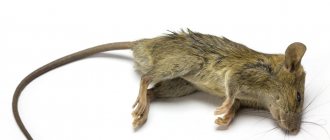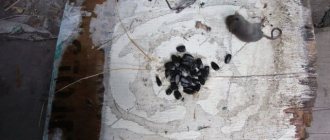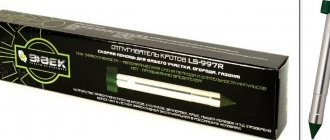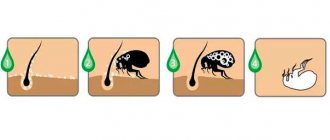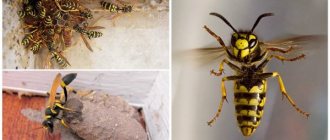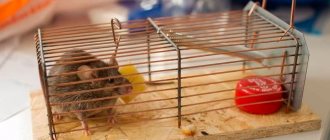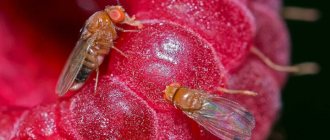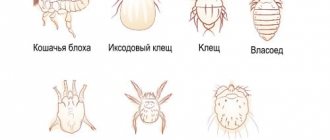When mice, rats and other rodents are noticed in the house, real chaos begins. It is customary to get rid of these little animals immediately, because the harm they cause is simply immeasurable: spoiled food supplies, chewed furniture, and even infections transmitted to people and their pets. Experts say that getting rid of rats and mice will take at least several days. One of the most effective tools for getting rid of rodents is mouse catching glue.
- Types of glue in mouse traps
- How to remove mouse catching glue from flooring?
- How to clean glue from linoleum
- Removing glue from the surface of furniture
- How to clean mouse catching glue from clothes and fabrics?
- Using household chemicals
- Using fat
- How to wash mouse glue off your hands?
- How to remove mouse glue from cat fur?
- Let's sum it up
A glue trap for mice allows you to quickly solve the problem with the appearance of these animals. In addition, it is often used to catch rats, which makes this tool truly universal. It is characterized by ease of use, but at the same time has specific rules of application. The point is that you need to be extremely careful, because the substance itself is extremely sticky.
If you use baits of this type carelessly, the adhesive composition will set almost instantly. You can only wipe it off experimentally, having tried several methods. Which ones? In this article we will tell you how to remove mouse glue and discuss the best methods that will help solve this issue.
Types of glue in mouse traps
Mouse glue comes in several varieties.
- Mousetraps or rat traps in the form of special bait houses on which glue is carefully distributed. Naturally, such rodent traps are more convenient indoors than other means. They are installed on surfaces favored by pests and do not require additional maintenance. Therefore, it is better to place them pointwise, in those places where mice have already been noticed. The use of such a rodent control product requires safe handling, as its improper use can lead to injury.
- Glue in a tube or jar for rat control. This is the more common form, but its main disadvantage is the difficulty in applying it evenly. However, such a product will not dry out even under conditions of high or, conversely, low room temperature. This glue should be applied to simple cardboard, which is for one-time use only. This means that as soon as the first mouse comes across it, the cardboard needs to be thrown away. Otherwise, natural decomposition of the animal will occur. In order for the trap to be more effective, pieces of bait must be placed on it. You can add millet and other cereals.
Naturally, both products have approximately the same composition. Therefore, regardless of the form in which the traps are presented, you can wipe off mouse glue using the same methods.
It is important to note that in rooms infested with rodents, a lot of glue-based baits will be needed. Therefore, it would be more expedient and much more humane to use an ultrasonic rat repeller. The fact is that animals are very susceptible to ultrasonic influence, and this method of repelling is guaranteed to save you from problems.
When deciding how to clean glue for mice and rats, you need to focus on the features of a particular product. Often, detailed recommendations for use are written on the labels of such products.
If a similar situation happens to you, we are in a hurry to help you figure out how to solve it correctly.
Types of means
A special composition was developed specifically to eliminate rats and mice indoors. The glue does not have a specific odor, so as not to repel rodents, and is also non-toxic, which allows you to use it in any home without fear for your health. Depending on the brand, the active substance may be one of the following components:
polybutylene or polyisobutylene; cycloisan.
If one of these substances enters the body in small quantities, it will not lead to negative consequences, but you should still not use glue traps in homes with small children or animals. They can be poisoned by glue if it enters their body in large quantities. Currently, there are two ways to get rid of rodents using this product:
- A glue board is a fully prepared rodent trap, consisting of a surface with an adhesive base thickly applied to it. To use a ready-made trap, you just need to remove the protective film and place the board in the right place. Often such devices are already impregnated with a special composition that lures rodents into a trap. This significantly speeds up the process of catching mice.
- The liquid composition is a substance contained in tubes with a lid. The advantage of this type is the ability to use it on any surface, even washable ones, for example, tiles or glass. Before applying, it is better to play it safe and use a small amount of the composition to check whether it will be easy to wash off. It is better to apply a thick layer of glue onto cardboard or wood.
Before using the adhesive composition, you need to carefully read the instructions and familiarize yourself with the manufacturer’s recommendations, because each product has its own characteristics and requires special precautions
How to remove mouse catching glue from flooring?
Practice shows that the use of mouse traps most often stains the floor covering. This happens for several reasons: due to carelessness, the bait can simply turn over, you can accidentally apply too thick a layer of the substance, or simply inadvertently drip onto the floor.
The main advantage of this adhesive composition is that, thanks to a specially developed formula, it remains in a liquid state for a long time. It turns out that you will clearly find the stain itself in liquid form.
It is important to note that the most problems arise when the adhesive mixture gets on the carpet. In such situations, instead of worrying about how to remove mouse glue from your carpet, it is better to look for ways to disguise the stain.
There are two most common ways to clean mouse glue from the floor:
- Water with lemon juice. In one liter of heated water, dilute the juice of at least two large lemons and add a little ethyl alcohol. Wet a rag with the resulting solution and vigorously wipe the area with the spilled adhesive.
- Soapy liquid. Water with laundry soap diluted in it has approximately the same effect. This method will help you deal with stains of any complexity. We grate a whole bar of laundry soap. The resulting shavings are completely dissolved in hot water. We wait for the liquid to cool down. Using a soft sponge, wipe the stain until it disappears completely.
The main advantage of these methods is their safety. They can be used to clean painted carpet without disturbing the paint layer.
There are other products and methods for removing rodent adhesive that can be used exclusively for cleaning durable and inexpensive floor coverings. In particular, they are suitable for cleaning linoleum.
How to clean glue from linoleum
The use of sticky rodent repellent can lead to contamination of surfaces. You can remove glue from linoleum much easier and faster than from parquet or carpet. The main advantage of this flooring is its softness. However, it is also considered the main drawback - after all, the adhesive solution sets much faster with a soft coating. Therefore, you will have only a few minutes to decide how to clean the bait traces.
It is permissible to use aggressive chemicals, which, at the same time, should not have any properties that could affect the color of the coating. For this reason, you may well use an alcohol-based method for cleaning.
- We take pharmaceutical alcohol of high concentration. A higher degree will bring a more noticeable effect.
- We dip a rag in it and vigorously rub the area where the stain was placed.
- If the stain is too large and too much adhesive has been spilled, it is recommended to remove excess adhesive with a hard object or an ordinary construction spatula. If this is not done, there is a possibility of simply spreading the stain over an even larger area.
Removing glue from the surface of furniture
A more difficult task is the question of how to remove mouse glue from furniture. If such a product stains upholstered furniture, it is most likely that it will simply be impossible to save it. The adhesive composition contains substances that cause serious harm to fabric coverings. But washing a certain part of a sofa or chair is an impossible task.
The only ways to save the product is to use special carpet cleaners, liquid laundry detergent and a stiff brush. However, such brushes should not be used on delicate fabrics, as they can cause irreversible damage. In such situations, the only way out is to reupholster the furniture.
Restoring a hard furniture surface is a completely doable task. Cleaning natural wood will be especially easy. For such products you can use alcohol solutions. They can also be used to clean glass and plastic.
If you have to clean furniture made from wood substitutes or products with a painted surface, it is better not to take risks and use White Spirit, a solution of lemon juice or laundry soap. Naturally, you will have to work much longer and harder, but the material itself will suffer much less.
How to clean mouse catching glue from clothes and fabrics?
When working with mouse glue, you need to be extremely careful, because you can stain not only the floor or furniture, but also wardrobe items. If such a situation occurs, you will have to think about how to wash mouse glue from clothes.
According to reviews, different adhesive mixtures are better washed off with different special-purpose products. However, almost all articles advising on the best way to remove glue agree that the main success is a prompt response to what happened.
Therefore, the sooner you can start cleaning the stain, the greater the chances of removing its remnants without serious consequences. After all, otherwise it would be wiser to take the item to the dry cleaner than to try to remove the stain on your own.
Using household chemicals
If you still need adhesive-filled fabric or items, try removing mouse bait stains with a heavy-duty household chemical that is not designed for washing items. These products include those designed for cleaning bathrooms or kitchen surfaces, or for washing glass or furniture.
Moreover, toilet cleaners will be an effective cleaning principle. In this case, the chances of restoring the item are approximately 50/50.
If the task is completed successfully, you should not wear the salvaged item of clothing immediately after drying. After the treatment, it must be washed two or three times with washing powder and rinsed with a special rinse aid.
Using fat
Lists of tips on how to remove glue from mice constantly suggest this non-standard method. Fat, oddly enough, also helps to cope with a surface contaminated with glue.
To do this, you will need to lubricate the adhesive spot with sunflower oil. Moreover, it is permissible to completely immerse the damaged part of the fabric in oil. There it needs to be kept for about five or ten minutes, depending on the size of the stain. After this, using a hard, clean object, you will need to carefully scrape the softened composition from the fabric.
Naturally, after such cleaning you will have to get rid of the greasy stain, which is still much easier than dealing with the remnants of the adhesive mixture. In the end, there is always the opportunity to take the item to the dry cleaner, where professionals will deal with the stain.
Preventive measures
It is easier to prevent the appearance of rodents than to remove them. It is necessary to constantly protect the house from attacks by parasites and monitor the hygiene of the premises. You should:
- Avoid littering both at home and in the immediate area.
- Do not leave spoiled vegetables, cereals, or scattered grains in pantries or cupboards.
- Clear leftover food from the table in a timely manner and keep the rooms clean.
- Do a weekly general cleaning with bleach.
At the first sign of the appearance of mice, urgent action is required. Mice reproduce quickly and are able to populate a room with offspring in a short time.
Wood ash is scattered along the walls of the room. Rodents avoid the mixture that burns their paws. Fumigating the house with sulfur bombs is considered an effective way to remove mice from the house. Folk remedies prevent the appearance and spread of mice. Such methods achieve the disappearance of mice through humanitarian means.
The most effective:
Peppermint is sown around the house and the leaves are dried in the room. Mice have a negative attitude towards mint scent.
To prevent mice and rats from living in the house, the owners are obliged to keep the premises strictly clean and follow the rules of sanitary hygiene. The appearance of a mustachioed pet in the apartment will be reliable protection against mice. But if rodents have made their way into the house, the owners should not give up. Proven recipes and industrial products will help you quickly deal with the problem of mice.
In order not to have to worry about washing off the adhesive substance used to catch mice from things or hands, it is necessary to take into account a number of rules when working with the adhesive composition and installing traps.
These include:
- Carry out work using replaceable old things and rubber gloves.
- Install cardboard or plastic on which the adhesive mass is applied in places where pets and people do not walk.
- Glue the cardboard to the floor with tape and place a sheet of paper under it, this way you can protect the flooring from contamination.
It is advisable to check the trap once a day to remove stuck rodents from its surface.
To do this, you can use household chemicals, vegetable oil, alcohol-containing solutions or gasoline, depending on the type of surface. However, if the means at hand do not bring results, you still need to use dry cleaning services.
How to wash mouse glue off your hands?
After catching a rodent, there is almost a 100% chance of getting dirty with such glue. And as soon as such an incident occurs, the question immediately arises of how to wash mouse glue off your hands.
Human skin is not as susceptible to the effects of an adhesive solution as, for example, fabric. However, when a certain amount of mouse glue gets on your fingers, it feels about the same as if they were glued together with superglue. It is quite possible to correct the situation with ordinary sunflower oil. It does not have a strong odor, which makes it safe even for children. So, it is completely harmless to the skin and can quickly dissolve the sticky layer of glue. At the same time, you can not be afraid to scrape off its remains. Indeed, it is likely that some dead skin will be removed along with the glue, but no pain or discomfort should arise from this.
Another good remedy that will allow you to quickly wipe off the adhesive mixture from the epidermis is acetone. A bottle of such liquid is undoubtedly in every woman’s cosmetic bag. This product is very safe for the skin, and its only drawback is the rather strong smell. It is important that allergy sufferers should absolutely not wash mouse adhesive with this substance. Those who are allergic to acetone should use the first method.
How to remove mouse glue from cat fur?
Happy owners of pets have the hardest time dealing with mouse infestations. The cat family, due to its natural curiosity, is often interested in the contents of the mousetrap and gets dirty in glue. Let's talk about how to remove mouse glue from your pet's fur.
Before you wash the mouse glue off your cat, you will need to catch it. Cats are often afraid of getting into a sticky substance, so they try to run away and hide in a place that they think is calmer.
Assess the situation: how dirty is your animal? If the trap is firmly stuck to the pet, you will need to cut the trap itself with scissors. In this case, you need to try to cut the cover as high as possible. Pulling off hairs is strictly prohibited, as this can injure the animal.
If you are not sure that you will be able to unhook the trap yourself, or if it is attached too close to the skin, it is better to immediately take the cat to the veterinarian. It is prohibited to wet the animal's cover in order to remove the softened glue. There is simply no way to wash mice glue off a cat with water or other liquids. The damaged area will simply have to be carefully cut off. In this case, any water treatments will only bring additional stress to the cat.
If the cat has entered the glue directly with its paw, you can deal with the problem using a principle equivalent to removing mouse glue from human skin. Just soak the cat's paw in sunflower oil at room temperature. Once the glue has softened, gently scrape off the layer with a soft sponge or cloth. It is not recommended to use hard objects to avoid injuring your pet. After the stain is removed, it is recommended to wash the foot with soap or dishwashing detergent.
Let's sum it up
Rodents reproduce extremely quickly, so when they are detected, measures should be taken to eliminate them as quickly as possible. Some types of mouse trapping glue must be used with extreme caution, especially if there are children in the house. Read the instructions carefully before use.
To avoid having to deal with glue stains on different surfaces or on the fur of your beloved cat, you need to adhere to several important rules for using glue traps for rodents:
- Install them in places inaccessible to children or animals.
- Tell everyone in your household exactly where you set the traps.
- Do not place tubes of product close to upholstered furniture or clothing.
- Treat these substances like superglue. Take all appropriate precautions to prevent the negative effects of rat glue on various surfaces.
If you have any questions about how to properly apply mouse glue, we recommend watching the video:
Handy tools for removing glue
To wash off glue, you can use products that can be found in any home. Good results show:
- vegetable oil;
- dishwashing detergents;
- lemon juice;
- laundry soap;
- kerosene.
Before you begin processing, you need to make sure that the selected product can be used on the specific material that has been stained. Otherwise, you can clean off the glue, but ultimately ruin the item.
Vegetable oil
Vegetable oil has proven itself as a means for washing various sticky substances. In addition, this product is absolutely harmless and can even be used to clean hands or animal fur.
To properly clean rat glue, you need to generously moisten the stained area with oil and leave for 7 to 10 minutes. During this time, the oil will dissolve most of the adhesive mass. After this, the remaining glue is wiped off with a sponge. Then the oil is washed off with warm soapy water.
Dish detergent
Available in a large assortment of dishwashing products from the store, this is another way that many housewives quite successfully wash off glue intended to get rid of mice.
The product gives the best results when treating fresh stains or when carrying out repeated cleaning after the bulk of the glue has already been cleaned off by other methods.
Attention! The effectiveness of this method largely depends on the specific product chosen, since the compositions of dishwashing detergents differ from different manufacturers
Kerosene
When choosing how to remove old glue stains, many people decide to use kerosene. Indeed, this product combats various adhesive stains quite effectively. To avoid inhaling toxic fumes, treatment should be carried out only in a mask or respirator.
Also, do not forget that kerosene leaves a sharp, unpleasant and, most importantly, very persistent odor. Kerosene also dries out the skin very much. So, when washing your hands or cleaning pet hair, it is still better to choose another product that removes glue.
Lemon juice
Many people reasonably believe that the more natural the product, the safer it is, so they remove the glue with lemon juice. To be honest, this option is far from the most effective. It only helps to remove the remaining sticky substance after more powerful products have dealt with the main contamination.
Lemon juice
Laundry soap
Many housewives consider laundry soap to be a magical remedy that helps in a wide variety of situations. It is also used to wash off mouse glue as best as possible.
Soap can be used to remove glue from children and pets, and to clean clothes made from delicate fabrics. It also helps remove stains left by other cleansers, such as oil.

